Blasphemous (Nintendo Switch) Review
THE MIRACLE GIVETH AND TAKETH
When the first trailer for Blasphemous dropped it felt like an electric shot rang throughout the indie gaming scene. The grotesque forms of twisted monsters and the perversion of Spanish Catholicism, seemingly drafting a world of dark fantasy from a wealth of historical evil delighted thousands enough to back the game through crowdsource funding. Those monstrous designs always stuck in my mind like a thorn buried deep in the flesh but surprisingly I hadn’t played Blasphemous until now, shortly after the free DLC and update The Stir of Dawn was added to the game. I have since finished the main quest, getting both endings and getting a great deal of the items and fishing most of the side quests. However, I am just at the cusp of a second, much more difficult playthrough and I fear that I have not the strength to successfully overcome the Amanecidas and their leader Laudes. This is the guilt I bear.
Blasphemous is violence pushed to the point of beauty in a way that reflects the famous, yet grim artworks that adorned many of the greatest literary pieces and decorated the marbled walls of spectacular churches. In many ways, the art of Blasphemous reminds me of the Dante’s Inferno etchings created by Gustave Doré in the mid-1800s. These images created a lasting visual identity for the Divine Comedy and I feel like Blasphemous is a modern, smaller fantasy spin on those ideas.
Inspired prose aside, Blasphemous from The Game Kitchen and published by Team17 Digital is an action game with light Metroidvania elements mixed with Dark Souls both in a mechanic sense and the game’s story is delivered. Much of the lore of Blasphemous is given to the player in cryptic dialogue as well as dense descriptions of the game’s numerous items. What results is a 2D action game set in a delightfully dangerous world where a mistake, or a series of mistakes, can cost one their life.
Players don the pointed helmet of the Penitent One, awakening at the start of the game in a mountain of corpses that are all wearing the same helmet. Following a short tutorial section, the Penitent One faces down an ogre-like creature, and upon felling it slices its side, fills his helmet with its blood, and places that helmet on his shoulders. He then finds a tall being clothed in a roughly hewn rope that tells the story of The Miracle and how it brought guilt, repentance, mourning, and every pain of the soul to life as physical manifestations hellbent on bringing more agony to the people of Cvstodia. The Penitent One may be able to bring an end to that pain but must first go through humiliations, suffering, and facing the guilt that weighs so heavily on the people of this place.
Seeing this opening sequence of events for the first time is shocking, to say the least. Yet, it perfectly sets up the depravity of the next several hours and tells the player that one has to be mindful of enemy movements and patterns in order to survive. Every enemy in the game hits hard until later on when one has items that specifically increase defense. Learning this at the outset forces players into that mindset, much like the best examples of the Soulsborne genre.
Blasphemous does not pull punches when it comes to violence and grotesque imagery.
While the combat is engaging with an emphasis on clever dodging and reactions, I actually found the game’s world to be what kept me playing. Even though I knew of Blasphemous and the reception it has gotten, I didn’t know hardly anything about the game aside from a few scenes and a couple of boss designs. Everything else was a surprise to me and this planted a seed of curiosity that just would not stop growing. It wasn’t until finishing the game the first time that I opened up a guide and realized that there was much more to this world than I had realized.
Another word that I keep dwelling on in relation to Blasphemous is density. The actual space of the game’s world littered with crumbling churches, wind-battered mountains, and ghastly libraries is rich with both game content and world-building elements. I highly recommend doing that first playthrough as a 100% run as many of those benefits do carry over into that second, tougher run and the Penitent One needs all the help he can get. I was delighted by how well the developers were able to take what made the NPC questlines of Dark Souls so interesting and make their own spins on it. These characters are laced with fascinating symbolism that is worth breaking down and their lines are written and voiced expertly. There is also a Spanish language option that adds even more to the game’s atmosphere.
There are lots of moments that are absolutely breathtaking.
I do wish that I had realized sooner that there was a quality of life feature added to the game with this new update that I desperately wanted. By donating at least 20,000 tears to the Alms Box in the church, the player can teleport to the various checkpoints throughout the map, making traversal much easier. This is highly recommended as there was one particular sidequest that required taking down specific monsters and it would have been far easier to set up for attempts had I known this existed.
Judging by the game’s patch notes, this is now the definitive version of Blasphemous. While some of the best content is unfortunately locked behind that tough-as-nails New Game Plus, there are plenty of elements expanded upon and enriched to make the experience more rewarding. Even players who already have gone through Blasphemous should fire it up again as enough has changed that it could feel brand new.
While even the base game is pretty tough, there’s enough of a power ramp through the equipping of Rosary Beads, Sword Cores, and such that eventually I was able to beat most bosses on the first attempt and few enemies gave me any sort of trouble. I actually love it when Metroidvania games do this, giving the player some more confidence or more tools to get through areas more quickly. The pacing is much slower than most late portions of games in this genre but that mostly works in favor of Blasphemous. Part of that slower pacing could be a technical issue though.
Enemies can be brutally executed.
Maybe this is because I spent my entire playthrough handheld on the Switch but Blasphemous does struggle from occasional visual jitters and few odd bugs. The jitters were frequent enough that I may consider picking this game up later on PC or something to avoid it but I fell through so many platforms that I’m convinced there’s a detection issue as well. This mostly occurs with floating or moving platforms, which also conveniently are positioned above instant-kill spikes, and I think it has something to do with the character’s hitbox not being as forgiving when compared to other games and I fully admit that this could be intentional design. I also ran into this interesting glitch at the final boss where I was hit by so much magic in the far right corner that the Penitent One was juggled into a screen transition, ending the game early for me after spending only a few seconds in the fight. I went back in and beat the boss fair and square (a couple of times to get the right ending) but it was hilarious. I don’t know what it is with me and finding weird exploits to final bosses in Metroidvania games but something similar happened in The Mummy Demastered. Blessing or curse? Beats me but I do typically see the credits roll on these games.
Yes, Blasphemous is more challenging than most games in this genre (though I fully admit that Hollow Knight is far more challenging throughout) but with enough time I was able to get through it. If it wasn’t for the extremely well-crafted world and fascinating visuals though, I doubt the gameplay would’ve kept me hooked.
This climbing section is one of my least favorite segments but it does show off how Blasphemous is tough both in combat and platforming.
Each map section essentially works like combat encounters where enemies are placed in a way to challenge the player, even if they approach at a different angle. For example, many enemies throw projectiles and they must be running some predictive coding or something because they are accurate. This forces the player to be mindful of those units, either with deft dodges or slapping away missiles with a well-timed sword strike. This is made more challenging through various platforming sections. I wasn’t a huge fan of these because of that weird jump detection but at least there are lots of looping paths that make it feel like progress is constant. It’s also hard to make players feel clever, which is something brought up in our talks with Dave Oshry in regards to the Quake-inspired DUSK, but I had lots of moments playing Blasphemous where I gleefully realized things were clicking into the map design spatially.
Whether slicing up demons or hopping through bladed pendulums, timing is everything in Blasphemous. Mashing the sword button can block some projectiles but more often than not one will slip through and it’s damaging enough to have players reconsider their actions. Missing a jump can result in death, meaning it’s important to be wary of the layout of the area and maybe even do some scouting beforehand. Most bosses have patterns to their movement and knowing how to weave into their attacks to deal just enough damage to get out safely is key to a lot of fights. If it wasn’t for the weird slowdown though I probably would’ve liked the combat flow of Blasphemous a little more; the stakes were always high and I was enjoying slowly piecing together ways to maximize my movements and catering my equipment to my style. One’s skills are mostly tested in the epic boss battles with massive monsters of biblical terror.
Visually, every boss is stunning. These are huge sprites with multiple parts and each fight does feel slightly different. It would have been easy for all of these fights to feel like just wailing on a background layer’s weak spot but one will be about taking down three nimble foes while moving upwards as fire devours the floor or learning the best ways to parry the mace swings of a lightning-blessed knight just to name a few. I only wish that I could’ve seen the new bosses that were added in.
Bosses are often huge and stunning.
As stated before, the best parts of The Stir of Dawn have to be played on the harder mode. Having to play through the entire game to unlock a mode that gleefully slaps me around is the type of punishment that only the creative minds behind this game’s twisted world would find reasonable. Sure, this approach is a fitting punishment considering the themes of the game but that also means there’s a whole section that I probably can’t get to because now the little shield monsters kill me in two hits. Maybe one day I’ll get there but I think there will need to be a performance patch for the Switch before I take that challenge seriously. This aside, I really enjoyed my time with Blasphemous and it’s a world I’ll be thinking about long after putting down the controller.
Blasphemous is beautiful. Soaked in blood and covered in grime, it is clear that so much effort and vision was put into this game. The animation is gorgeous, the designs are awe-inspiring, the music complements things without getting in the way. There’s a ton of things to unpack and I’ll admit that I am just not equipped with the insight for some of the grander ideas. Even with just taking in the surface-level story and reading up on some interpretations online though, I am absolutely infatuated with this world. Whether it be a sequel, a novel series, an animation, comics, whatever it is The Game Kitchen decides to do with Blasphemous, I am hungry for more from these creators and I cannot wait to bite into that next feast.
SCORES
GAMEPLAY - 7/10
VISUALS - 9/10
SOUND - 8/10
CONTROLS - 7/10
REPLAY VALUE - 9/10
OVERALL - 8/10
Blasphemous is available on Nintendo Switch, Steam, Xbox One, and PS4 for $24.99 USD and more information can be found on the official website. Screenshots were captured via the Switch. A digital copy was provided for the purpose of review.
For more Gothic adventures, check out our reviews of either Bloodstained: Curse of the Moon or Curse of the Moon 2 both of which perfectly echo the ideas and principles of the NES Castlevania games. For cracking monster skulls in a more cartoonish fashion, look no further than our review of DOOM Eternal.
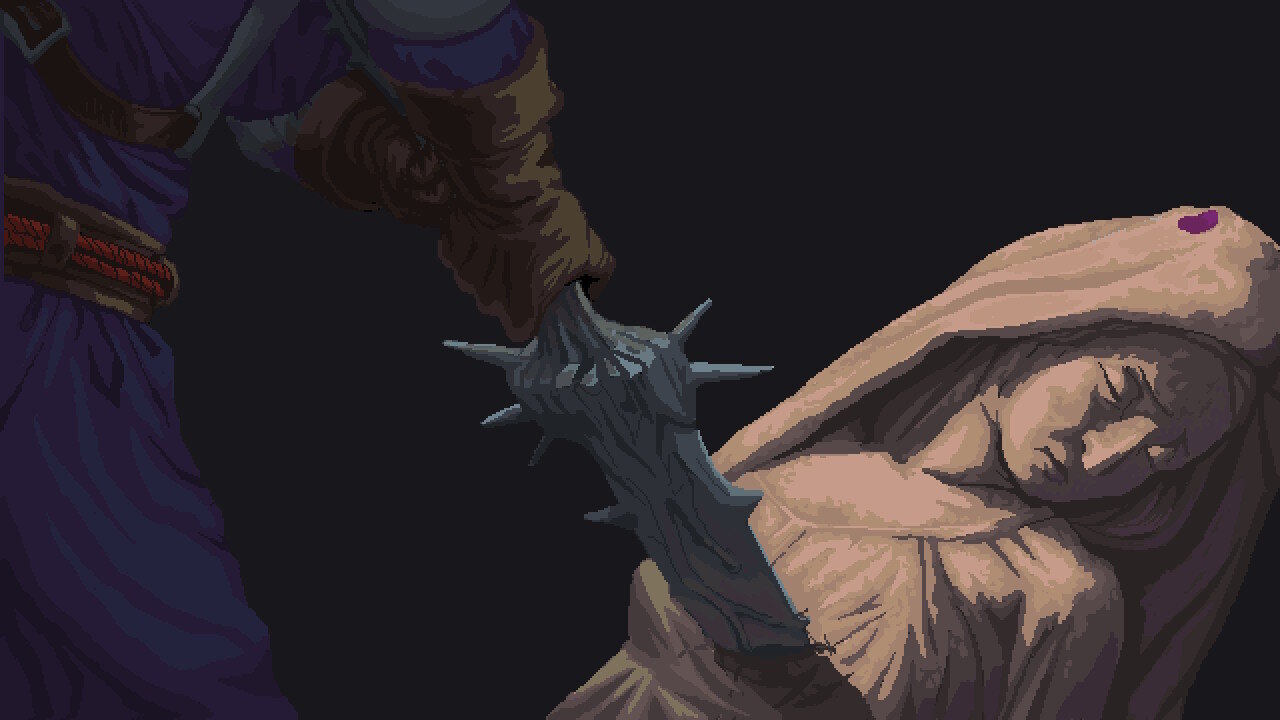
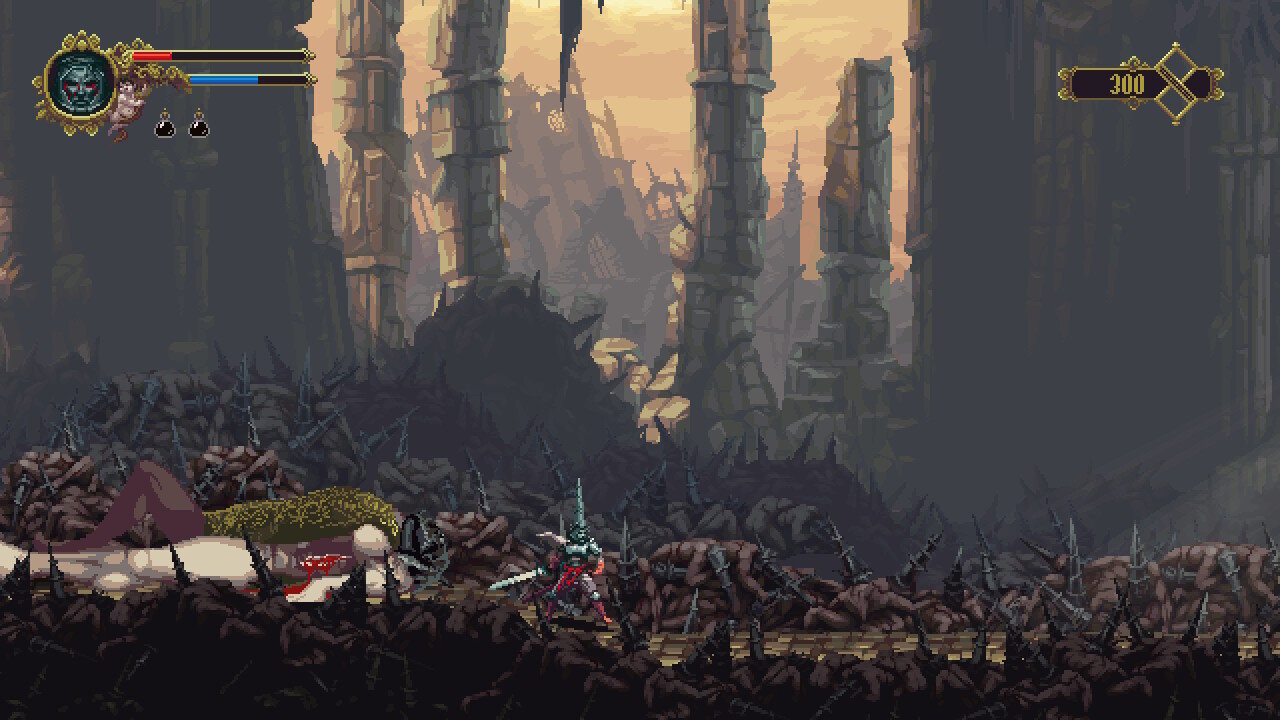
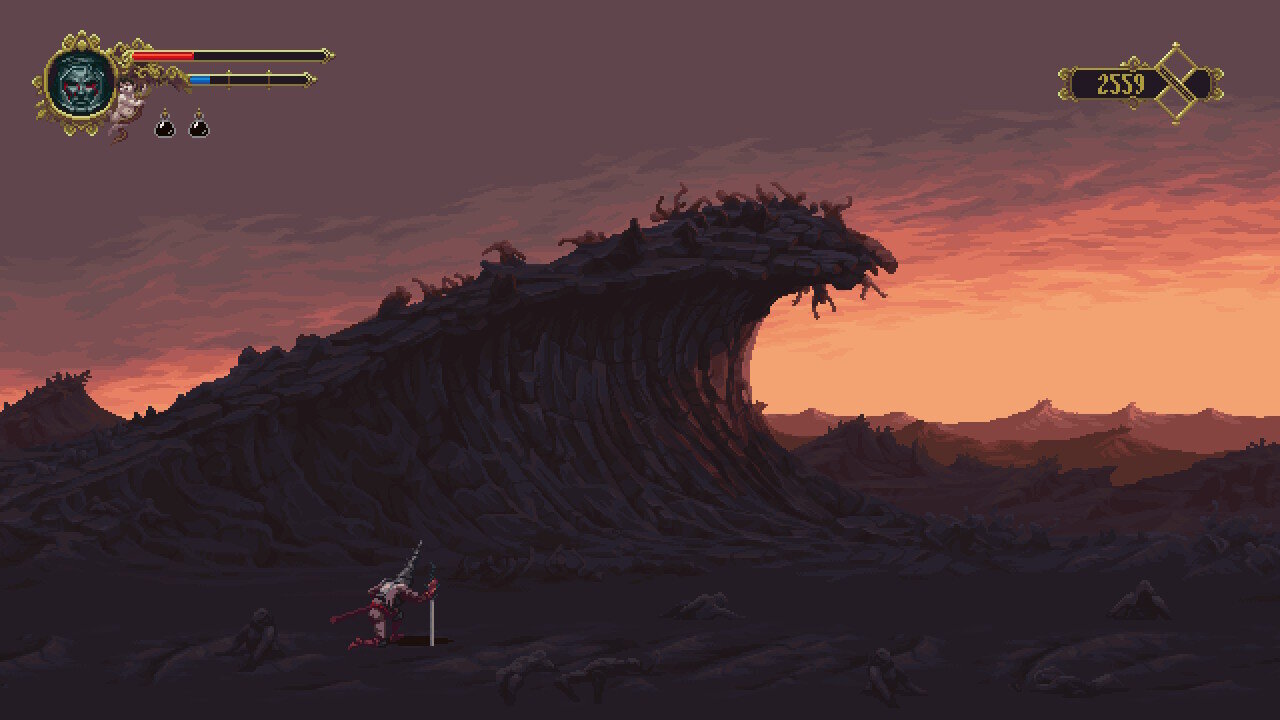
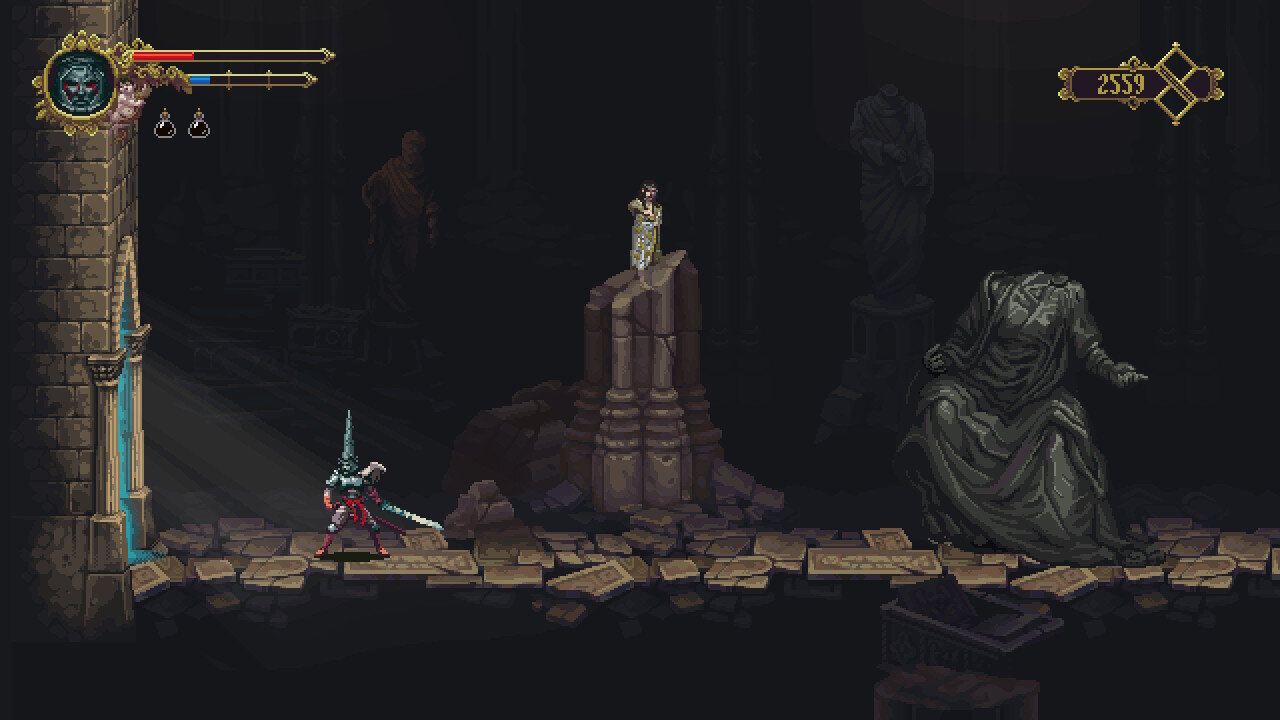
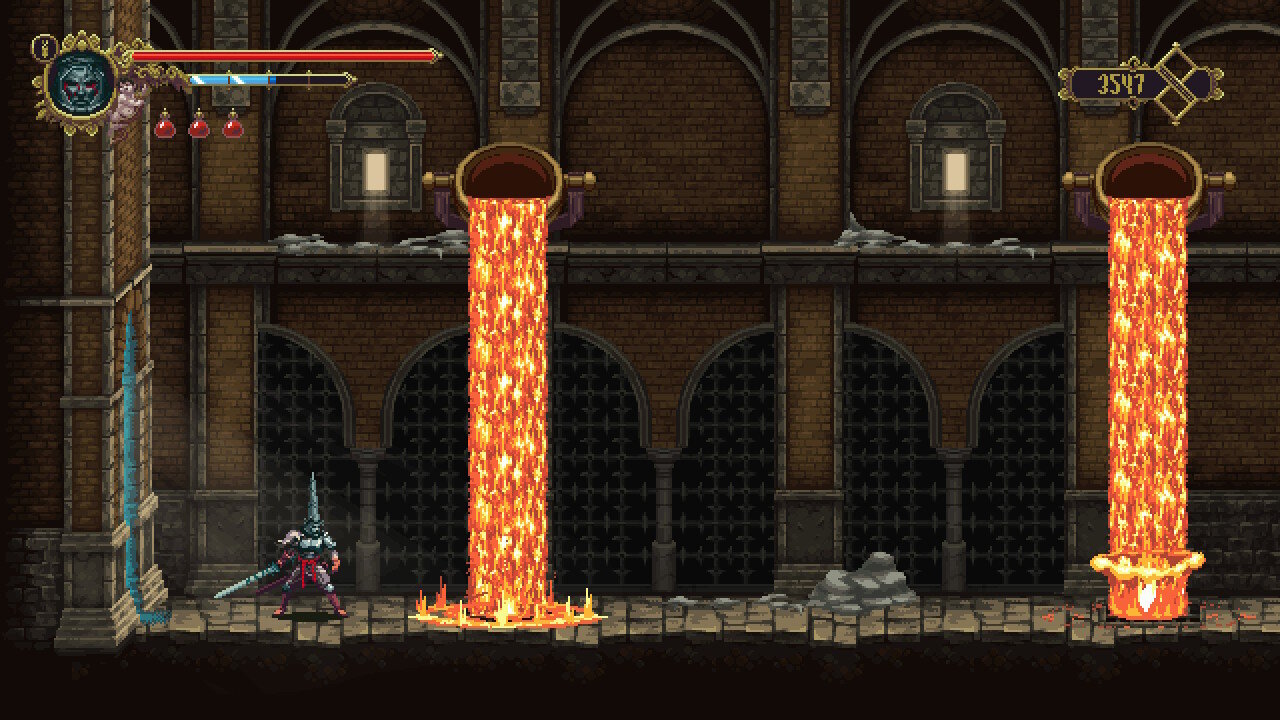
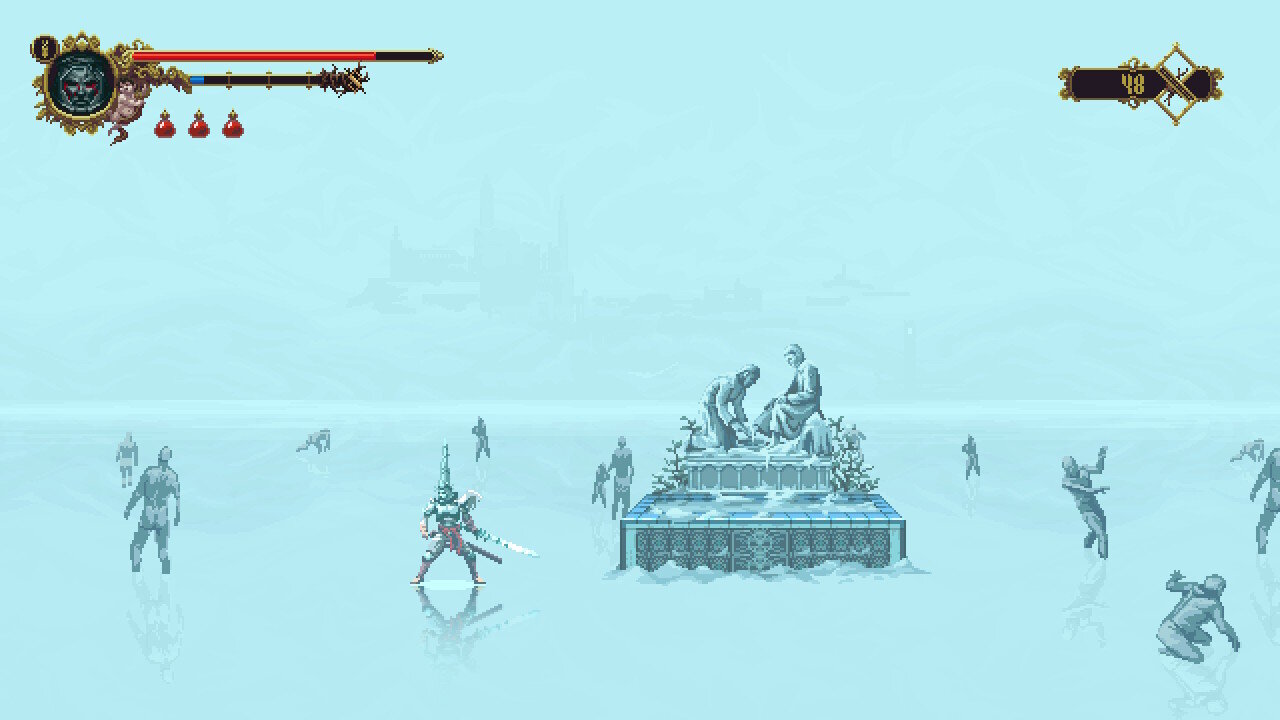
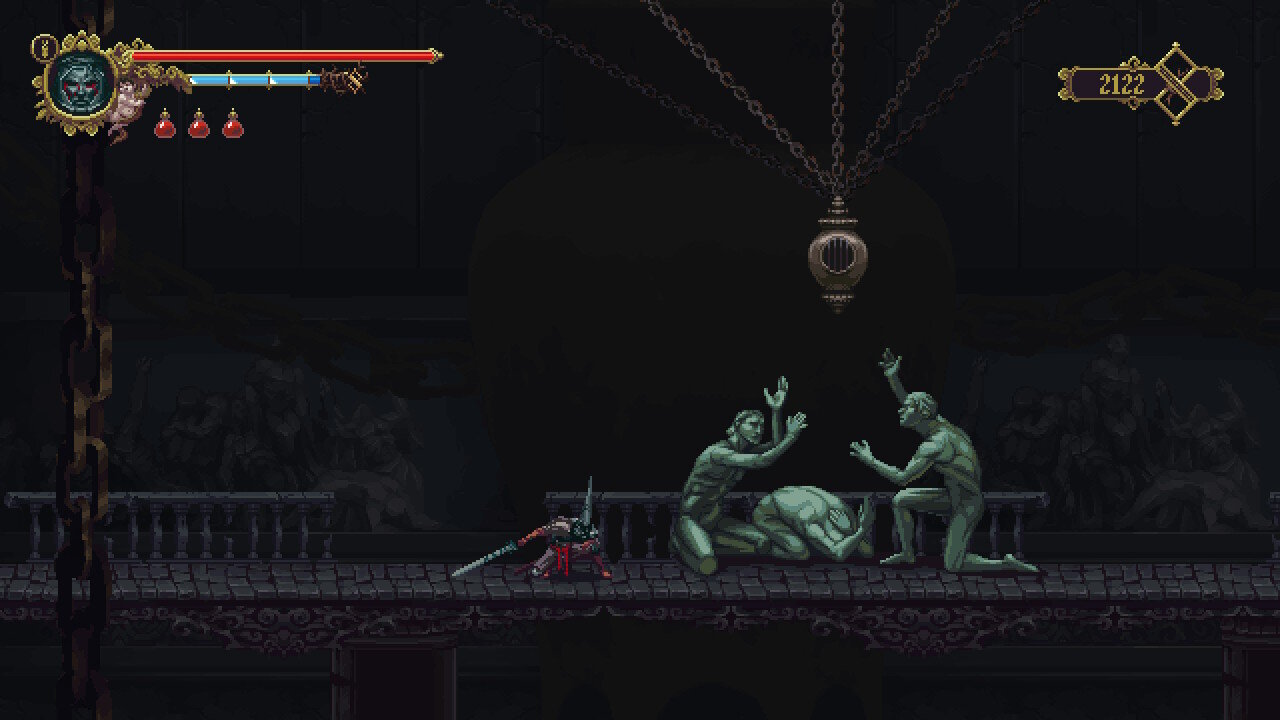
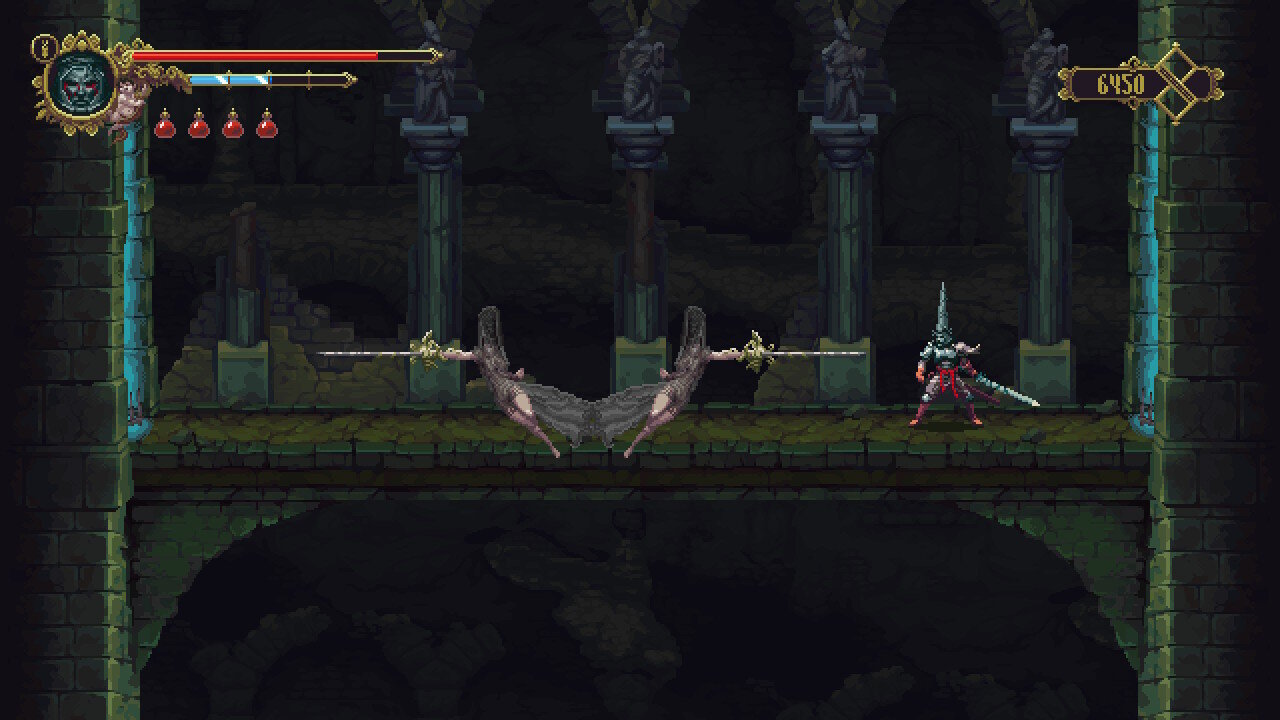
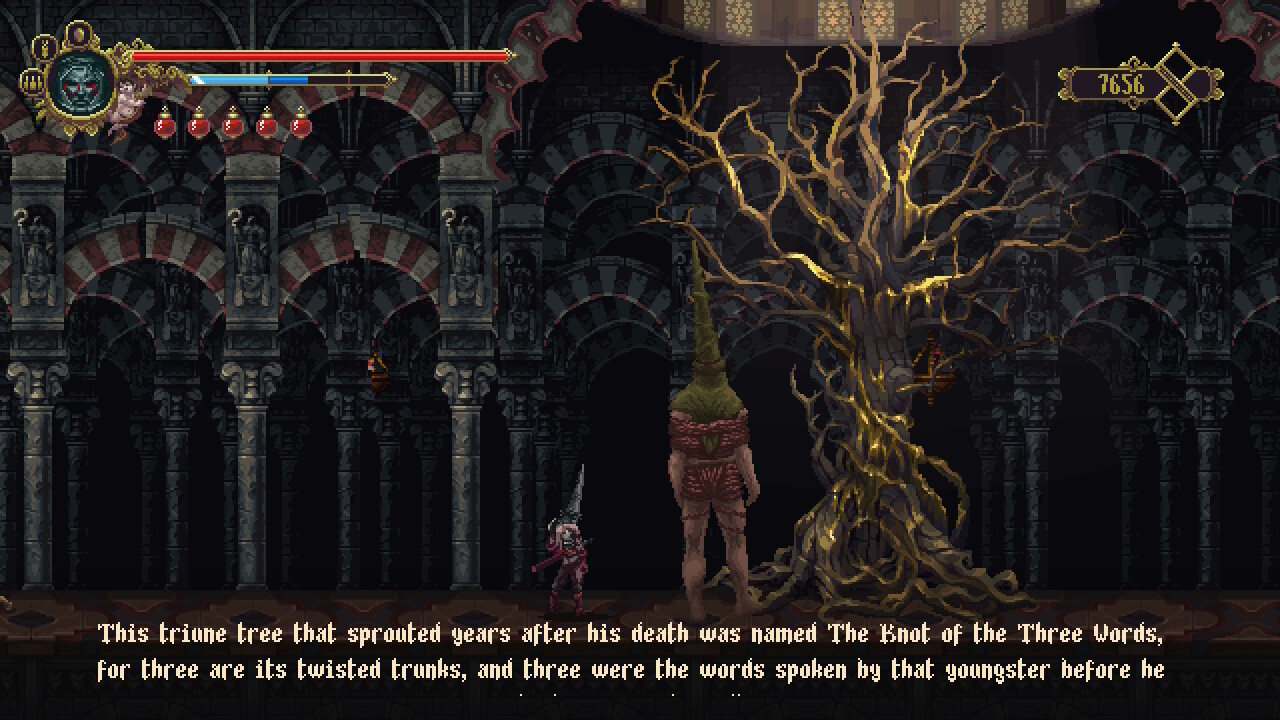
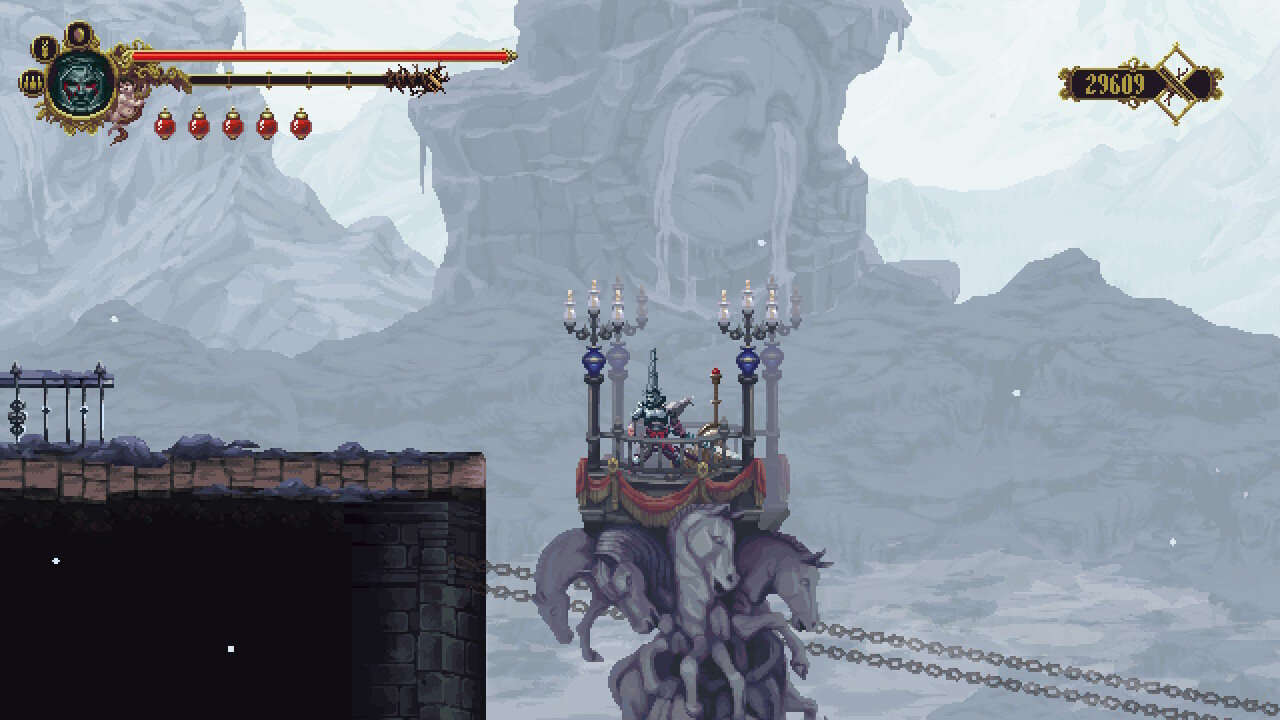
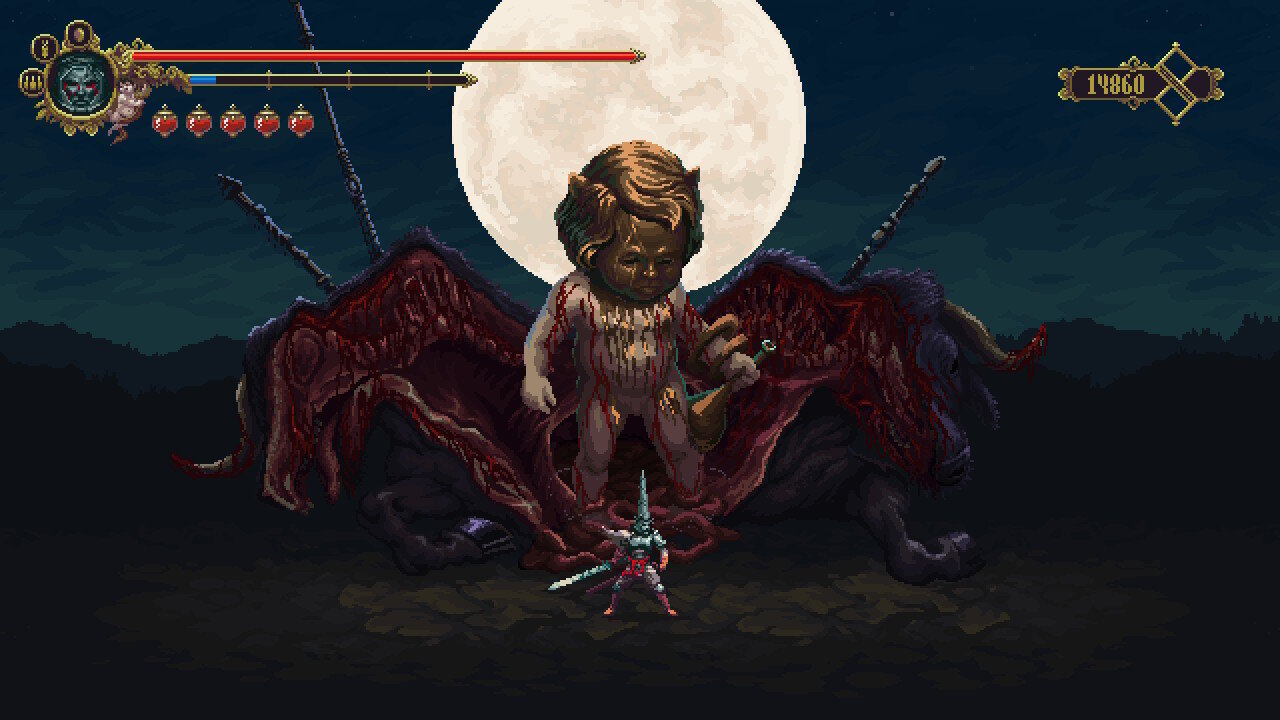
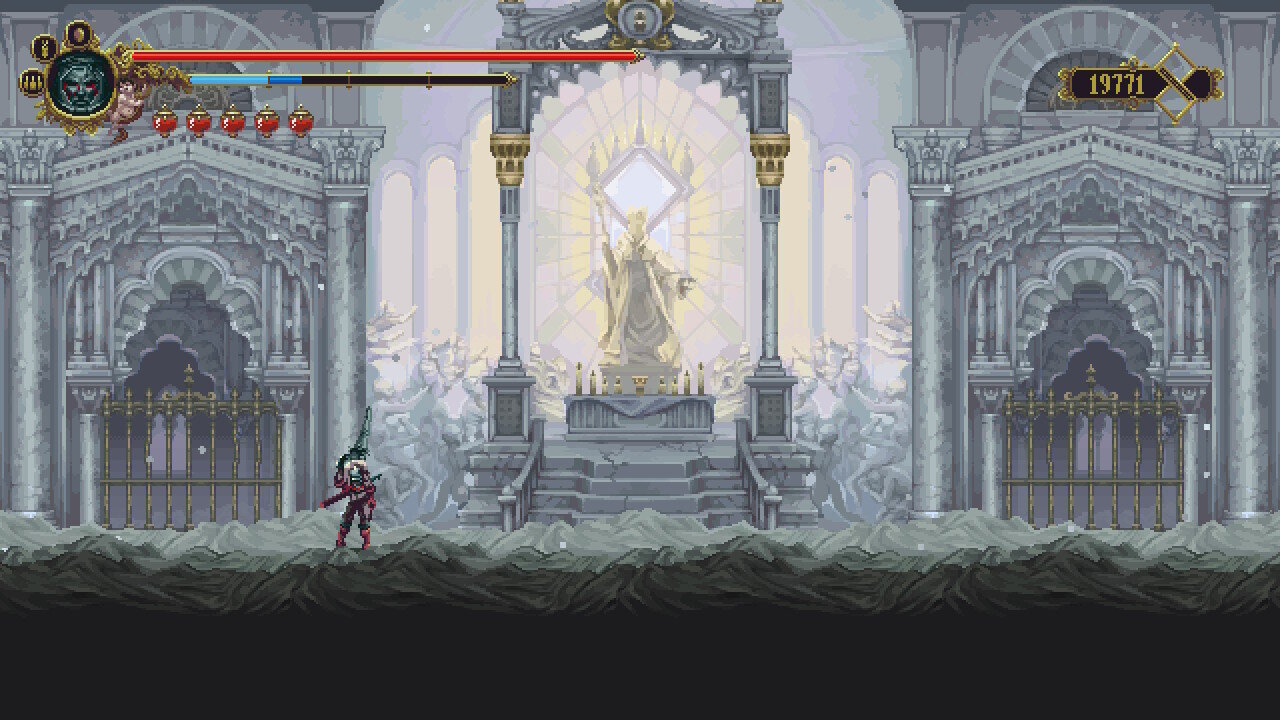
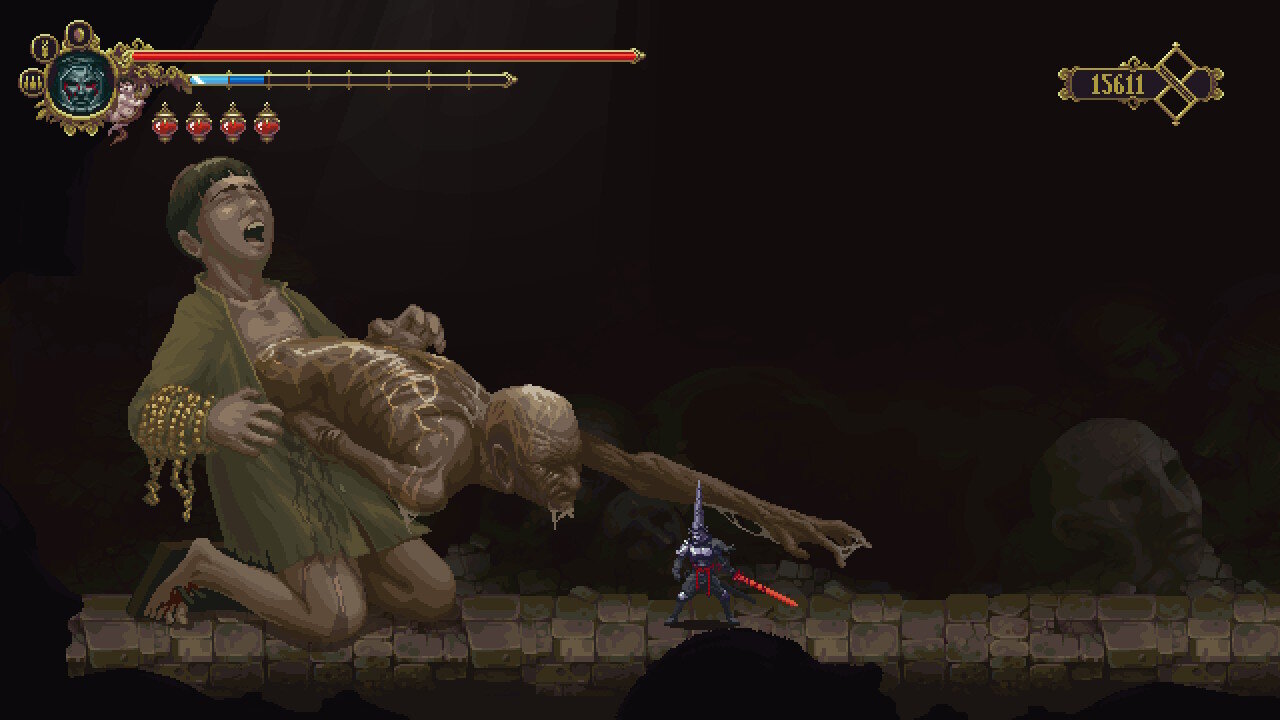
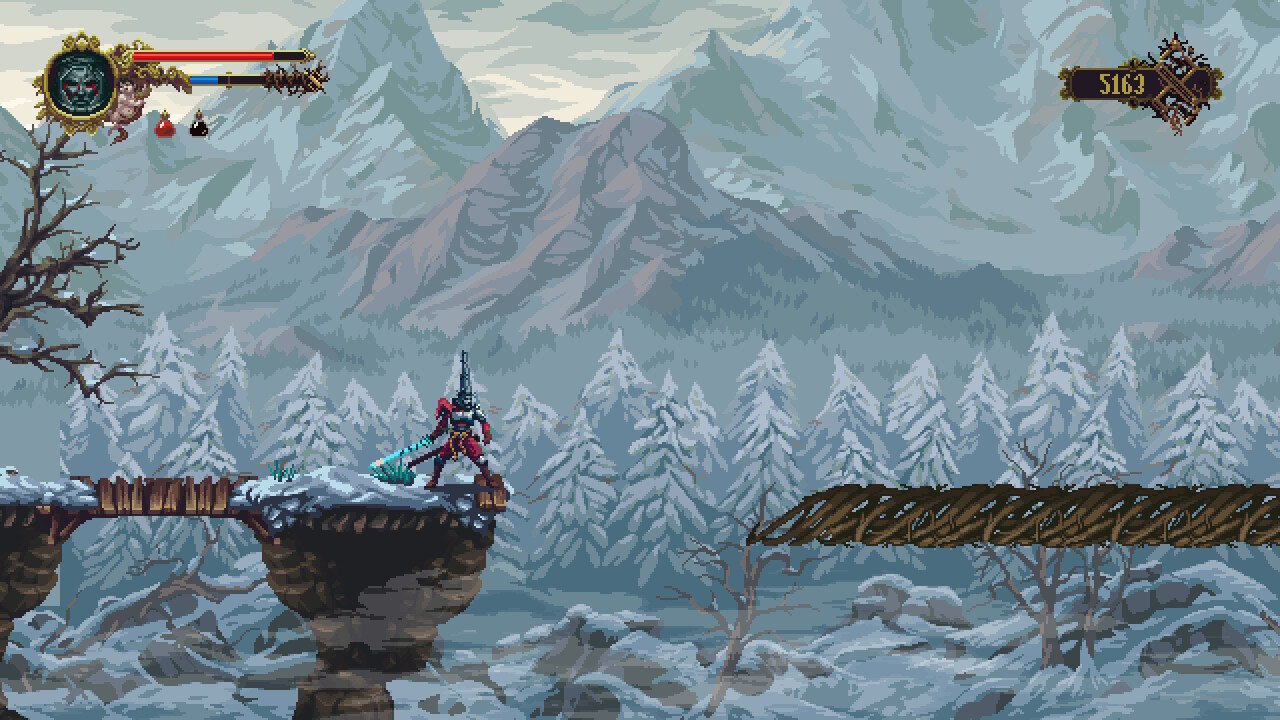
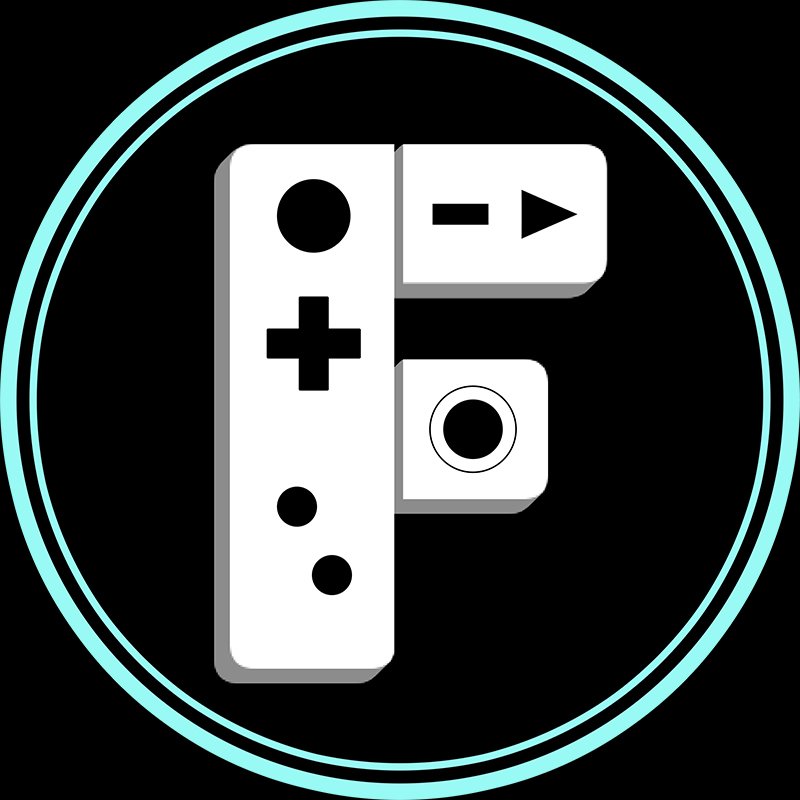

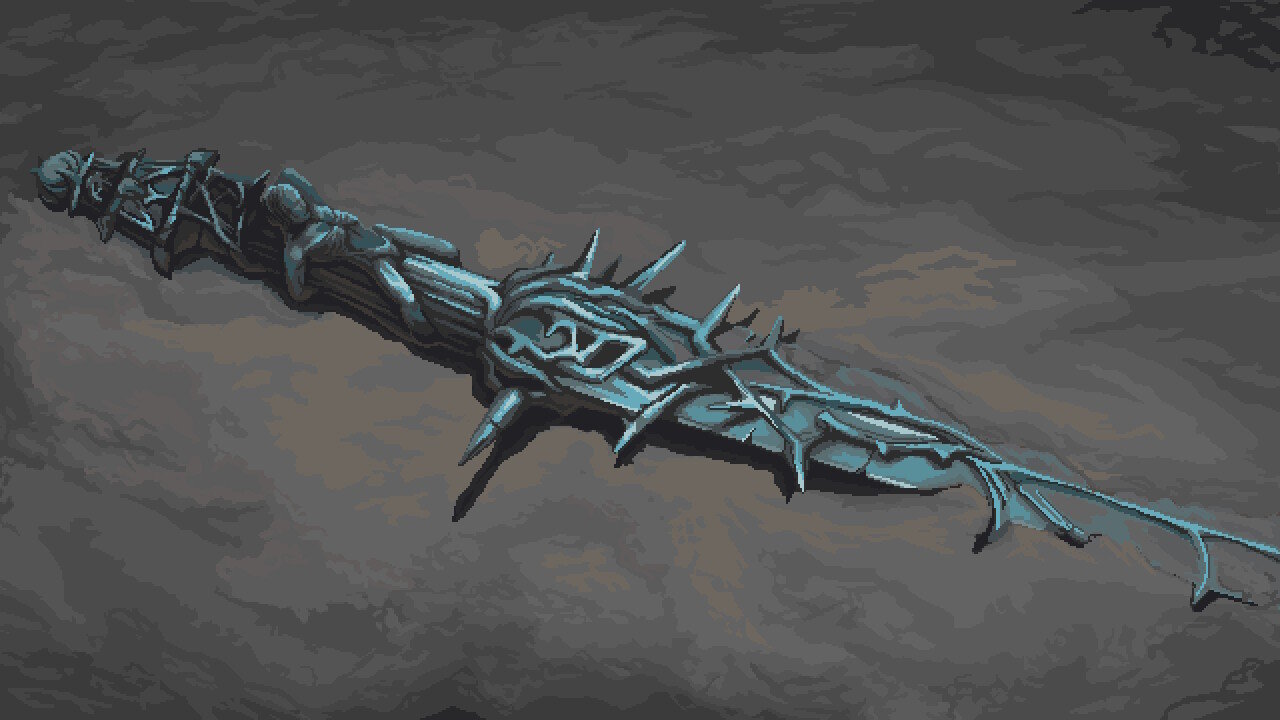







On a path that will ultimately result in his own destruction, James Savage takes on his vampiric ex-girlfriend Draculae in El Paso Elsewhere, a moody neo-noir action shooter from Strange Scaffold.